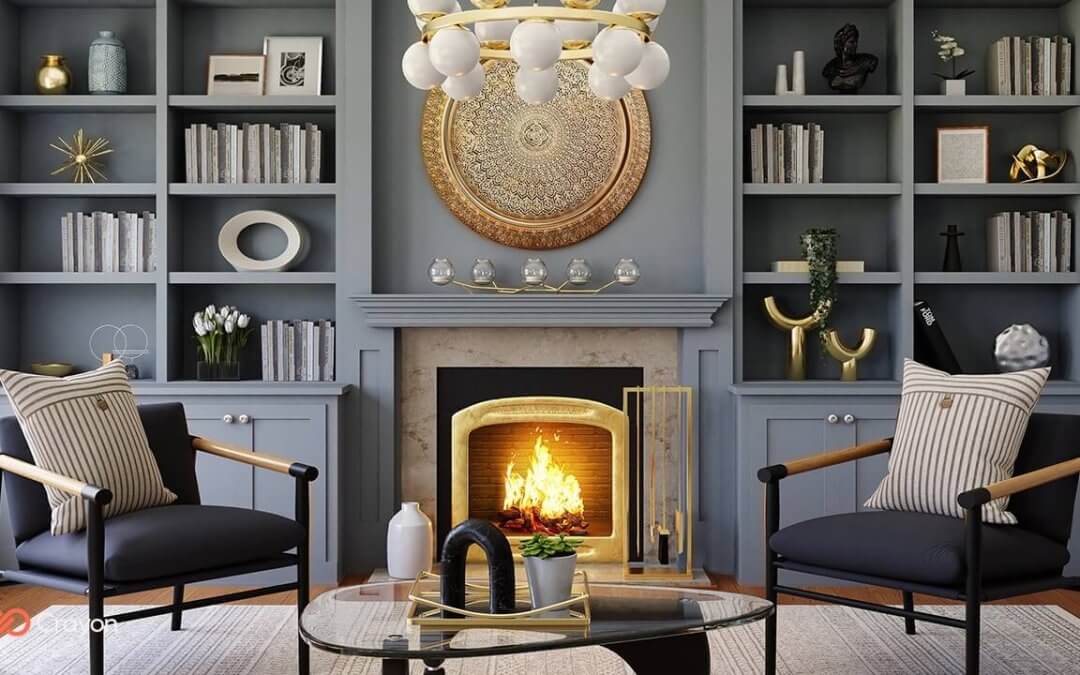Last time we talked about chimney caps but didn’t go too in-depth on the central issue they are made to combat. Downdraft, in other words, is the movement of air down the chimney or into the house.
It’s crucial to understand downdraft and its dangerous effects. It’s a problem most homeowners will come into conflict with should they use their chimney. There was a focus on how downdraft impacts one’s heating and cooling bills, which is true. But it also can impair breathing and suffocate residents.
What is Downdraft?
Downdraft, as stated before, is the movement of air downwards; to be more specific, it’s the current of air that pushes air molecules to a lower altitude. Updraft is the current that moves air molecules to a higher altitude, which cannot exist without another.
Many factors go into air currents and fluid dynamics; however, the factors of heat and pressure are the most significant in our case. Air moves from high-pressure areas to low-pressure areas, and warm air rises upwards. Another key to this puzzle is the material itself, ash is heavier than air, so while it is light enough to be responsive to air currents, it is liable to stay low even if there is a pressure differential less forced to move by air around it.
In simpler terms, smoke and ash only move up because the fire below them is warming the air around, and that air is moving up in an updraft from the heat change. In response, around the updraft pillar will form downdrafts, as the pressure at the bottom has been lessened, and the surrounding air wishes to reach equilibrium.
How do I Know if I Suffer from Chimney Downdraft?
An acceptable way is to check for soot. Often soot will settle in with dust around the home, but its dark color is fairly visible on any clear or bright surfaces. If you are finding soot stains around the house, you may have a downdraft.
Another method is to listen, Carbon Monoxide or Smoke alarms going off with little indication as to why it could be due to low smoke levels traveling on backdraft into the home. With that said, there are many other reasons smoke alarms may go off. One may also hear or feel airflow from the chimney if the draft is bad enough.
A final method is biological cues. Soot and smoke in the air are terrible for the body, and the body will respond accordingly. Trouble breathing, hacking, coughing, and eye irritation can be signs of persistent and terrible downdraft. If these are most common near the fireplace, even when not in use, that could be a sign.
That sounds normal, so what is “Chimney Downdraft?”
Indeed, all chimneys will have downdrafts naturally, but notice that a chimney has an opening at the bottom. When one makes a fire in a fireplace, the entire chimney flue should be filled with the updraft; there would be no room for downdrafts. So how does the pressure equal out?
The fireplace itself acts as a vent; of course, this is to feed the flame more air to keep burning, but this vent also plays a crucial role in maintaining updraft. The air from the room will instead sweep in through the fireplace to conclude the pressure differential; thus, the downdraft will occur right in front of the chimney.
Chimney Downdraft is when this balance does not occur, and in the flue, a downdraft manages to form, pushing against the updraft and pushing some of the smoke back into the home. This phenomenon can also be called a “backdraft.”
There is also the “stack effect” in tall enough buildings, where the inside of a home is conditioned and warmer than the surrounding outside air, and so it creates a high pressure towards the top of said building. Low pressure will try to regulate by pulling in air, and the chimney happens to have a vent to the cold air higher in the atmosphere. Without an adequately ventilated chimney, the air above comes down to equalize the pressure in the building.
Ways to Fix and Preventative Measures
As for proper prevention, a fundamental way is to manage the pressure. The Chimney Damper can be used for this; adjusting how it sits or how to open/close it left manages how much air is allowed through the chimney at a time. If one has a top-mounted damper, this is less convenient, as when closed, it traps warmer air. When opened, that air leaves and the atmospheric air already sitting there rushes in to replace it as you below start the fire creating a downdraft that may persist. However, a throat damper avoids the stack effect as it sits low, and thus there is less of a tendency to rush and establish a downdraft as the fire is being set.
Other ways of managing the pressure are windows, opening and closing them to create more avenues for air to come in and alleviate the stack effect; however, conversely, if too much of a breeze is let in, it can establish an air current in the home which may form into a vacuum only exacerbating the issue. Indoor Exhaust fans or other devices that pump air from the inside to the outside actively lower the home’s pressure.
Another method is manipulating temperature, turning off lights, and lowering the heater can help minimize the stack effect. Ovens, Stoves, and other electric appliances as well generate heat in a home.
Then there are ways to fix it after cleaning, or getting a chimney sweep may aid. Opening the chimney passageways for smoke to escape, it’s possible that it simply has become too narrow over time. One may also have a short chimney, especially in an older home; chimneys rely on their height to ventilate as the air pressure is lower.
Author: Tra’Lon Gillis

